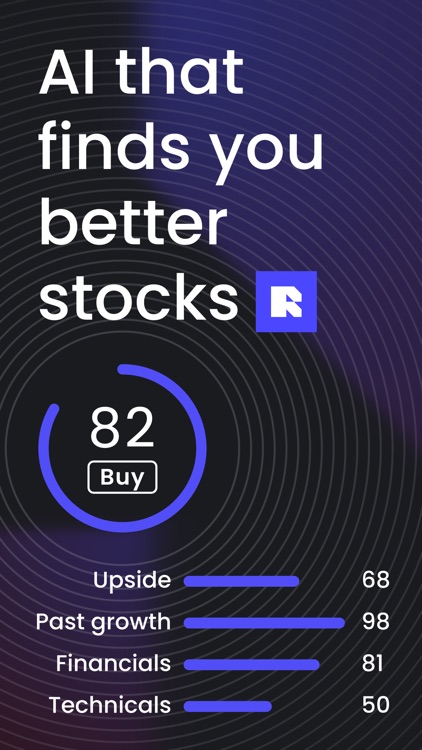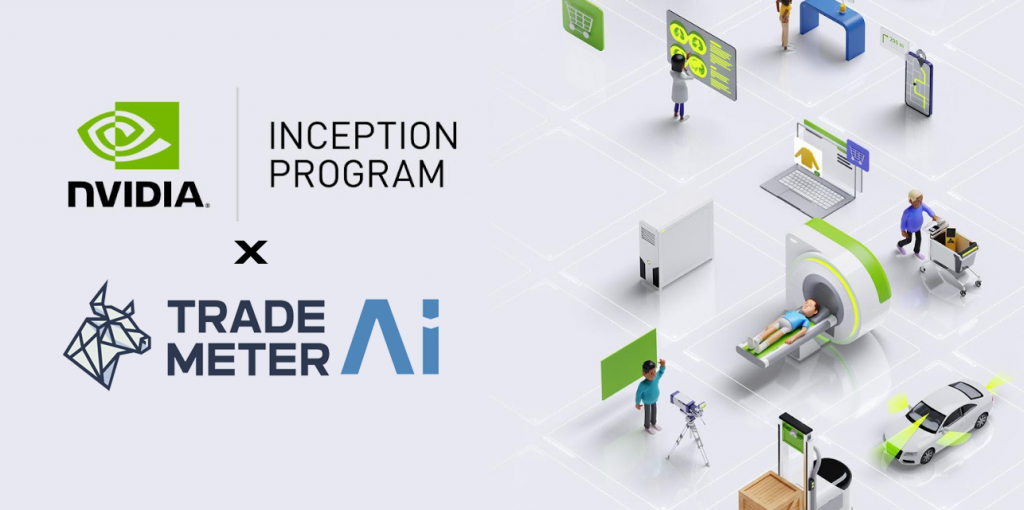20 New Facts For Deciding On Trading With Ai Websites
20 New Facts For Deciding On Trading With Ai Websites
Blog Article
Top 10 Ways To Evaluate The Security And Privacy Of Ai Stock Trading Platforms
Since they handle personal and sensitive financial information, security and security are paramount when using AI trading platforms that forecast or analyze price of stocks. Data breaches or mishandling could cause reputational and financial damage. Here are 10 best suggestions to evaluate the privacy and security of these websites.
1. Evaluate the encryption of data
Secure transmission of data: Make sure your platform is using secure protocols (e.g., TLS/SSL) to secure data transferred between your device and their servers.
Encryption of sensitive data at rest: Check the encryption of sensitive data on the server of the platform using a the strongest encryption standard (e.g. AES-256).
End-to-end encryption: Determine if your platform provides encryption from beginning to finish for sensitive data and communications. are highly sensitive.
2. Examine Authentication Mechanics
Two-factor verification (copyright) : Check that the platform is compatible with copyright for an added layer of protection.
Biometric authentication: Find out whether the app supports biometric login options (e.g. fingerprints or facial recognition) for mobile applications.
Password policies: Verify whether the platform has strong password guidelines (e.g. minimum length or complexity requirements).
3. Check for regulatory compliance
Financial Regulations: Check that the platform complies to applicable financial regulations.
Data privacy laws: Ensure that you are in compliance with data privacy laws that are applicable to your business in the event that they are applicable (e.g. CCPA or GDPR).
Audit certifications. Make sure that the system you're considering has passed an independent assessment of security or has been certified.
4. Review Data Access Controls
Role-based Access: Ensure that the platform is using Role-based controls (RBAC) in order to restrict access to data only to only authorized users.
Permission levels - Make sure that you have the ability to assign different permissions to users or members.
Activity monitoring Check to determine whether your platform tracks and monitors the user's activity.
5. Assess Vulnerability and Management
Regular updates: Ensure that your platform is updated with software frequently to patch any vulnerabilities.
Penetration test: Check if your system is regularly inspected to find and fix any security vulnerabilities.
Bug bounty programs: Verify whether there is a bug bounty program on the platform to encourage security researchers from outside to report security vulnerabilities.
6. Evaluate Data Privacy Policies
Transparency Privacy Policies: Read the privacy guidelines on the website to find out what data you provide will be collected, used and shared.
Data minimization: Ensure that the platform only collects the information necessary for its function.
Third-party data sharing: Make sure that the platform is willing to share your information with a third party and in the event that it is in the process of sharing, what.
7. Secure API usage should be checked
API security: Make sure the platform's API is secured with authentication methods, such as OAuth as well as API keys to secure data exchanges.
Rate limiting: Check whether there are any rate limits in the API to deter brutal force attacks or misuse.
Review the logs of access. Verify that the system tracks API usage, and logs it for monitoring.
8. Review Incident Recovery and Response
Incident response plan - Ensure that the platform is equipped with a plan of action for dealing with data breaches or other security incidents.
Read the policies of the platform for notification.
Data backups: Check if the platform regularly backs up data and has a disaster recovery plan in place.
9. Examine the physical security measures
Data center security Check that the servers that run your platform are located in data centers that have physical security measures such as access control and surveillance.
Redundancy - Make sure that your platform is outfitted with redundant systems to ensure data availability in the event that hardware fails.
Geographic distribution: To enhance resilience, make sure the data is distributed across multiple sites.
10. Test user privacy controls
Data deletion: Check that the platform will allow you to permanently delete your personal information when you stop using the services.
Privacy settings: Make sure your platform has privacy settings so you can control which data is visible or shared.
Check the anonymization of data for analytics and machine learning.
Bonus Tips
Reputation and feedback from users Review feedback and reviews from users to assess the platform's record regarding privacy and security.
Trial period for free: Try the platform's privacy controls and security features by using a demonstration.
Customer support: Make sure that the platform offers robust support for security-related issues or concerns.
These suggestions will assist you assess the security and privacy of AI trading platforms that predict/analyze the prices of stocks. Your data and financial information will be safe. Secure platforms will not only protect your assets, but it will also increase confidence and trust in its services. See the most popular copyright ai trading bot examples for blog examples including trading with ai, trader ai review, ai hedge fund outperforms market, stock ai, ai for stock trading, stock analysis app, ai investment platform, ai investing, trader ai review, free ai trading bot and more.
Top 10 Tips On Assessing The Regulatory Conformity Of Ai Stock Predicting/Analyzing Trading Platforms
Compliance with regulatory requirements is an essential element when it comes to looking at AI trading platforms for stock prediction or analysis. Compliance ensures that a platform complies to financial regulations and adheres to legal frameworks and protecting the user's information. This minimizes the chance of financial penalties or legal concerns. Here are 10 best suggestions to evaluate the regulatory compliance of these platforms.
1. Verify Registration and License
Regulators: Make sure the platform's license and registration is registered with the relevant financial regulatory authorities (e.g. SEC or FCA in USA, ASIC or ASIC in Australia).
Verify broker partnerships. If the platform integrates brokers, ensure that they are properly licensed and monitored.
Public records: You can check the official website of the regulatory body to find out if the platform is registered and if there has been any violations in the past.
2. Verify Data Privacy Compliance
GDPR: Make sure that your platform adheres to the General Data Protection Regulation.
CCPA: California Consumer Privacy Act compliance is mandatory for all users.
Data handling policy: Ensure that you go through the platform's privacy policies to understand the ways in which data of users is stored and collected.
3. Evaluation of Anti-Money Laundering Measures
AML policies: Make sure the platform has robust AML policies that are in place to detect and prevent cash laundering.
KYC Procedures: Determine if the platform has procedures in place for confirming users' identities.
Examine the platform's monitoring of transactions. Does it keep track of transactions and report any suspicious activity to the authorities?
4. Check for Compliance with Trading Regulations
Market manipulation: Make sure that the platform has measures in place to stop market manipulation, including the spoofing of trading and wash trading.
Order types. Examine if your platform complies with the regulations for orders.
Best execution: Ensure the platform follows the best execution methods. This will ensure that trades are completed at the best possible price.
5. Cybersecurity compliance assessment
Data encryption: Ensure the platform is encrypted to safeguard your personal information while it is in transit as well as at rest.
Response to incidents: Verify if the platform has a clearly defined incident response plan in case of data breaches or cyberattacks.
Certifications: Make sure the platform holds cybersecurity certifications (e.g., ISO 27001, SOC 2).
6. Transparency as well as Disclosure and Evaluation
Fee disclosure. Be sure that all charges and fees are clearly stated, as well as any hidden charges or fees.
Risk disclosure: Check if the platform provides explicit risk disclosures, particularly for leveraged or high-risk trading strategies.
Performance reporting - Examine to determine if there are accurate and transparent performance reports that are provided by the platform for its AI models.
7. Check the Compliance with International Regulations
Trading across borders: If you trade internationally, make sure the platform meets rules in all the jurisdictions relevant to you.
Tax reporting: Check whether the platform has tools or reports to help users comply with tax laws (e.g., FIFO rules in the U.S.).
Compliance with sanctions: Ensure that the platform is compliant with international sanctions and does not allow trading with banned entities or countries.
8. Examine Record-Keeping and Audit Trails,
Records of transactions: The platform must keep detailed records of every transaction that is used for audit and regulatory reasons.
Logs of user activity (logs) The logs contain information about user activity. determine if the platform is tracking the user's activities, including trading and logins. Also, check if the account settings have modified.
Audit readiness: Ensure the platform is equipped with all the necessary documentation and logs to be able to pass a review by a regulator.
9. Evaluate Compliance with AI-Specific Regulations
Algorithmic trading rules: If you're using a platform that allows algorithmic trading ensure that it is compliant with the relevant regulatory frameworks like MiFID II or Reg SCI which are in Europe as well as the U.S.
Fairness and bias Find out if the platform mitigates or is monitoring its AI models for ethical and fair trading.
Explainability: In accordance with specific regulations, the system should be able to provide clear explanations for AI-driven decisions and predictions.
Review the User Feedback and the Regulatory Histories
Feedback from users: Read user reviews to gauge the reputation of the platform for compliance with regulations.
The history of regulatory compliance - find out if the platform has been convicted of any previous regulatory violations or fines.
Third-party audits: Determine if the platform undergoes regular audits by a third party to ensure compliance with regulations.
Bonus Tips:
Legal consultation: Think about consulting a legal expert to review the platform's conformity to relevant rules.
Trial period: Use the demo or trial version for free to evaluate the platform's conformity features and documentation.
Support for customers - Ensure that the platform is able to help with any compliance related questions or issues.
These tips will help you assess the compliance of AI trading platforms which forecast or analyze the prices of stocks. So you'll be able select a platform that operates within legal frameworks, and also protects you. Compliance not only helps to minimize legal risks, it also increases confidence in the platform. Have a look at the most popular copyright advisor hints for more recommendations including ai for investing, investment ai, ai hedge fund outperforms market, stock analysis app, ai stock trading app, trading ai, ai investing app, chart ai for trading, best ai trading software, stock market software and more.